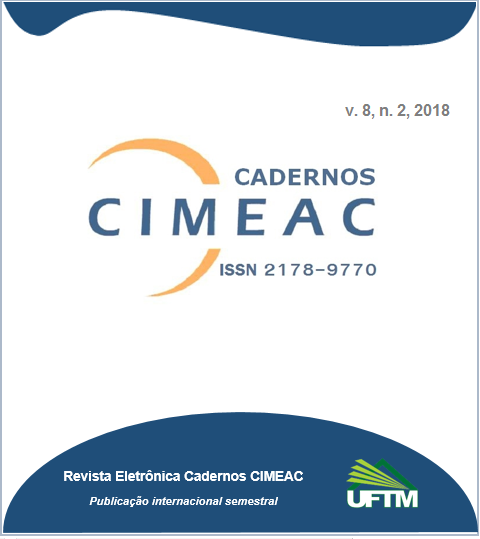A sofística no discurso educacional de Agostinho de Hipona / The sophistry in the educational discourse of Augustine of Hippo
DOI:
https://doi.org/10.18554/cimeac.v8i2.3166Abstract
O trabalho visa discutir as relações entre o discurso educacional de Agostinho de Hipona e as concepções de pensadores posteriores a ele, examinando as obras O mestre, publicada poucos depois de sua conversão ao catolicismo, e A instrução dos catecúmenos, quando ele já havia se tornado bispo. A análise segue os referenciais da sofística, que dão fundamento a uma proposição pedagógica cujo máximo expoente contemporâneo é John Dewey. A conclusão identifica nas fontes examinadas a ausência de um referencial da sofística, a forma discursiva chamada antilógica, o que sugere continuar a investigação por meio da análise de outras obras do filósofo.
Palavras-chave: Sofística; Agostinho; John Dewey.
ABSTRACT: The work aims to discuss the relations between the educational discourse of Augustine of Hippo and the conceptions of thinkers after him, examining the works The master, published shortly after his conversion to Catholicism, and The instruction of the catechumens, when he had already became bishop. The analysis follows the frames of the sophistry, which base a pedagogic proposition whose capital contemporary exponent is John Dewey. The conclusion identifies in the sources examined the absence of a referential of the sophistry, the discursive form called antilogic, which suggests to continue the investigation through the analysis of other works of the philosopher.
Keywords: Sophistry; Augustine; John Dewey.
Downloads
Published
Issue
Section
License
Os autores que publicam nesta revista concordam com os seguintes termos:
(a) Não cobramos dos autores para a publicação neste periódico.
(b) Autores mantém os direitos autorais e concedem à revista o direito de primeira publicação, com o trabalho simultaneamente licenciado sob a Licença Creative Commons que permite o compartilhamento do trabalho com reconhecimento da autoria e publicação inicial nesta revista.
(c) Autores têm permissão e são estimulados a difundir e a distribuir a versão publicada de seu trabalho online (ex.: em repositórios institucionais ou na sua página pessoal) após o processo editorial, já que isso pode aumentar o impacto e a citação do trabalho publicado (Veja O Efeito do Acesso Livre).
* * *
AUTHORS COPYRIGHT AND PUBLISHING RIGHTS
Authors who publish with this journal agree to the following terms:
(a) This journal does not charge authors for publication.
(b) Authors retain copyright and grant the journal right of first publication with the work simultaneously licensed under a Creative Commons Attribution License that allows others to share the work with an acknowledgement of the work's authorship and initial publication in this journal.
(c) For authors whose articles have been accepted: authors are permitted and encouraged to post their work online (e.g., in institutional repositories or on their website) after the publication of the text in Cadernos CIMEAC, as it can lead to productive exchanges as well as earlier and greater citation of published work (See The Effect of Open Access).


 10.18554/cimeac
10.18554/cimeac


